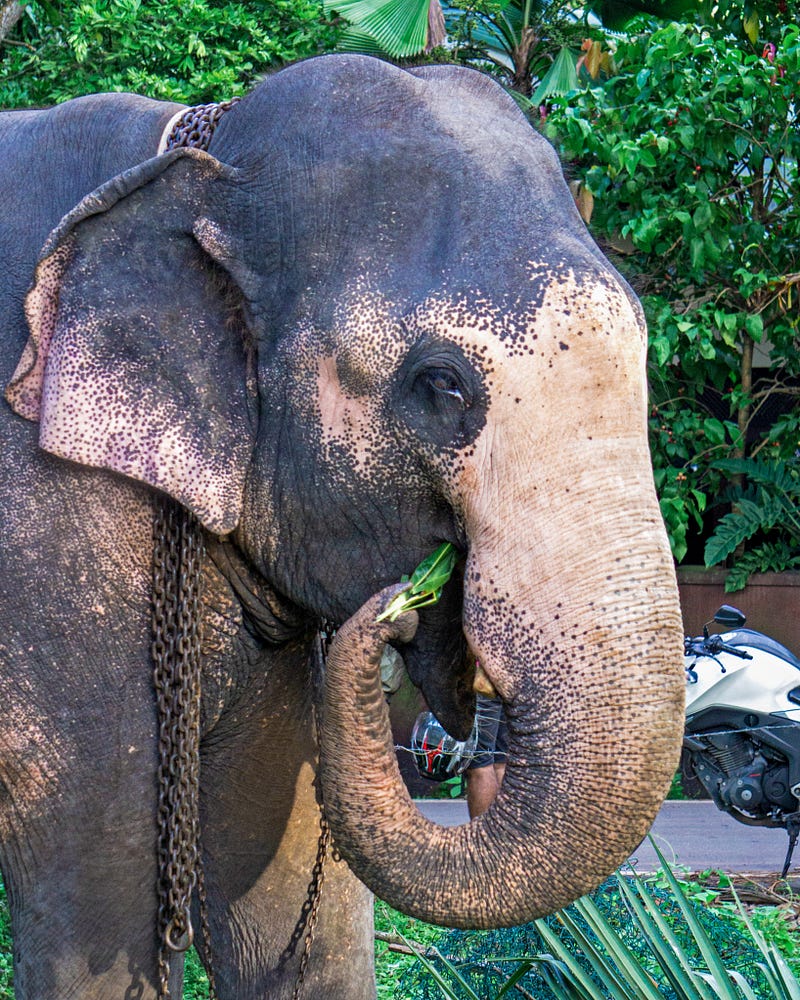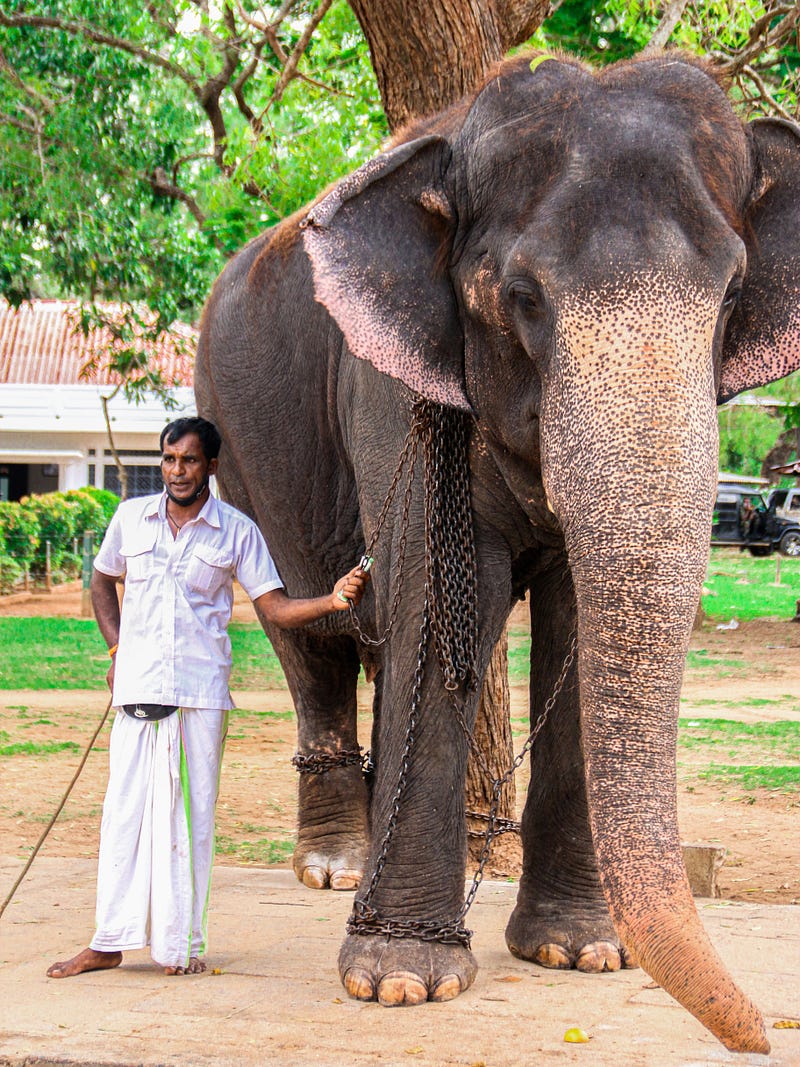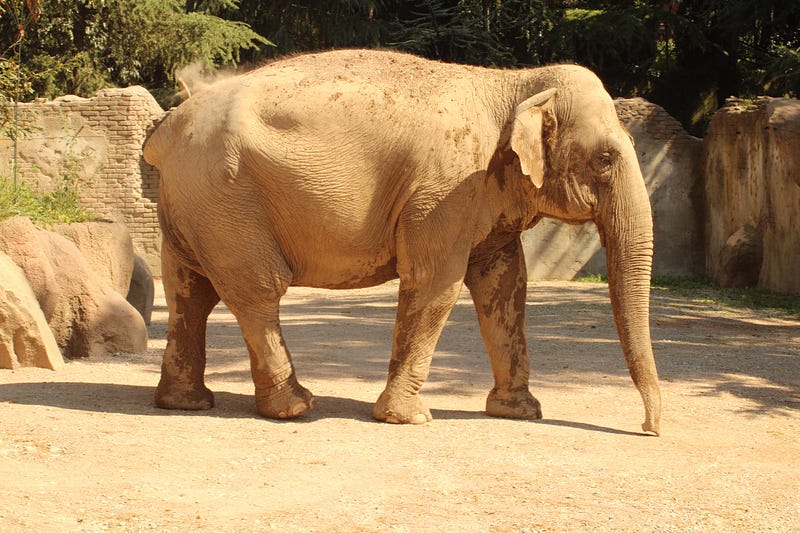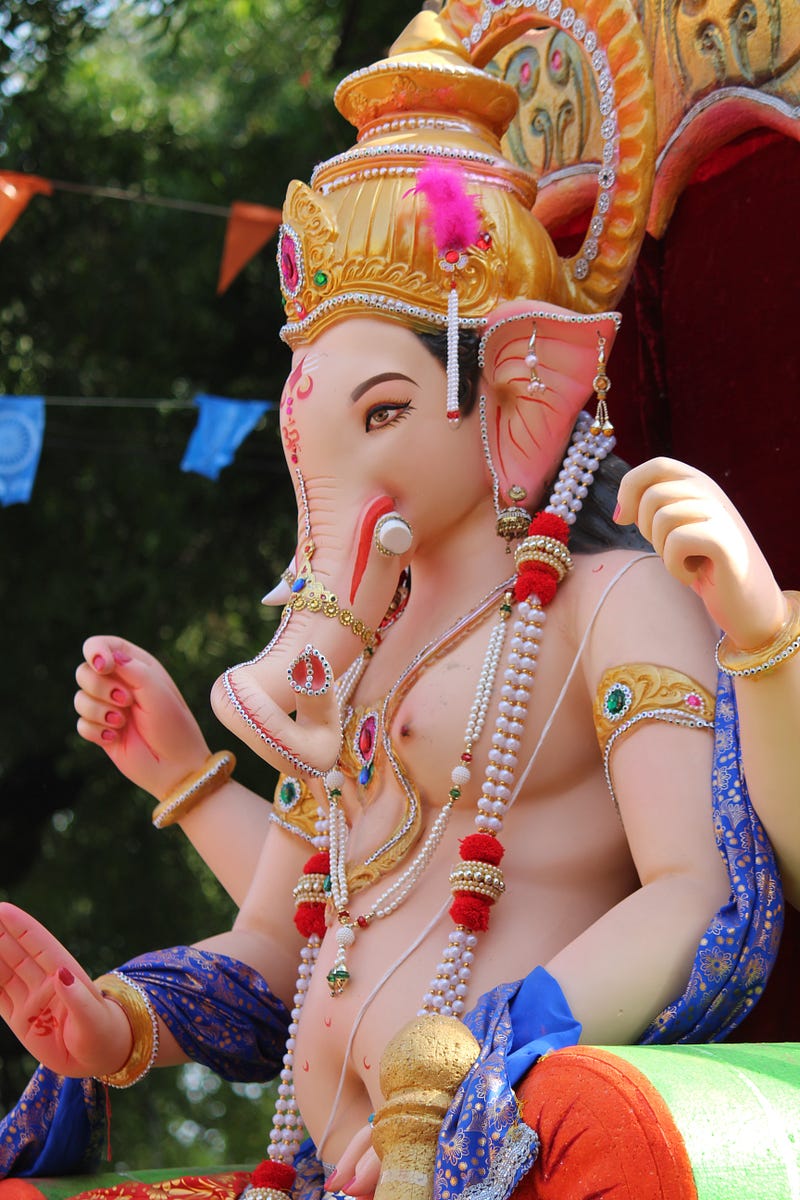The Indian Elephant: A Symbol of Power, Now at Risk
Written on
Chapter 1: Understanding the Indian Elephant
The Indian elephant, a significant member of the elephant family, represents one of the two remaining species in existence. These majestic creatures roam the forests and scrublands of South and Southeast Asia and have been endangered for many years.

There are three recognized subspecies of the Indian elephant: the Bengal elephant (Elephas maximus indicus), the Sumatran elephant (Elephas maximus sumatranus), and the Ceylon elephant (Elephas maximus maximus). Notably, the ears of Indian elephants are smaller compared to their African relatives, a trait linked to their lack of involvement in thermoregulation. Additionally, the trunk structure differs; Asian elephants possess a single "finger" at the tip, while African elephants have two.
These gentle giants enjoy bathing in mud and swimming. Typically, they live in herds of around 8-10 females and their young. Their temperament allows them to be easily tamed and trained. Breeding farms exist in various countries aimed at domesticating Indian elephants and enhancing their population through artificial breeding. The first successful birth in captivity occurred in 1905, and today, approximately 350 Indian elephants can be found in European zoos.
How much does this colossal creature weigh? Adult males can grow to about 2.7 meters at the shoulder and weigh around 2.7 tons on average. Here are some statistics regarding the Indian elephant: body length ranges from 5.5 to 6.4 meters, tail length can be up to 1.5 meters, skin thickness varies from 2 to 4 centimeters, gestation lasts about 21 months, newborns typically weigh around 100 kilograms, and their average lifespan can extend to 60 years.
As herbivores, Indian elephants primarily consume grasses, leaves, and fruits, with wild figs being a favorite. During the dry season, they include bark in their diet, requiring about 150 kilograms of food and nearly 100 liters of water daily.

Chapter 2: The Cultural Significance of Indian Elephants
The presence of powerful animals has fascinated humans throughout history. Indian elephants hold a vital place in Hinduism, often associated with the deity Ganesha, who is depicted with an elephant's head. According to mythology, Ganesha was the child of goddess Parvati, and after Shiva, in a fit of jealousy, decapitated him, he replaced Ganesha's head with that of an elephant.
In Indian culture, elephants symbolize strength and wisdom. They frequently participate in ceremonial events and are often seen adorning temples, where they bless worshippers. Jaipur, Rajasthan, hosts an annual Elephant Festival to mark the arrival of spring, featuring a parade of vibrantly decorated elephants.
Elephant figurines are thought to bring good fortune, particularly when their trunks are raised. Furthermore, Indian elephants are recognized as significant symbols in Asian astrology, serving as zodiac animals in both Chinese and Burmese traditions.

Chapter 3: The Endangered Status of Indian Elephants
Tragically, the population of Indian elephants has decreased by at least half over the past 120 years, with current estimates placing their numbers at around 40,000 to 50,000 individuals. Their habitat has shrunk to just 15% of the area they once roamed.
Laos, once home to a million elephants, now has only about 1,500 in the wild. Many are kept in captivity and exploited for labor in the forests, particularly for harvesting rosewood. In a nation grappling with poverty, these majestic animals are often viewed merely as tools due to their strength.
In India, the reduction of natural habitats has led to increased conflicts between elephants and humans. As their living space diminishes, elephants encroach on villages and cities in search of food, resulting in property damage and occasional attacks. Approximately 150 elephants are killed annually, while their actions lead to about 200 human fatalities each year—far exceeding the dangers posed by sharks.
Indian elephants are protected under the Washington Convention, yet they still fall victim to poaching driven by the ivory trade. While African elephant tusks can weigh up to 90 kilograms, Indian elephants’ tusks are significantly smaller, typically not exceeding 40 kilograms. Female Indian elephants lack tusks altogether.
Moreover, poachers target Indian elephant skin for the production of pseudo-medicines linked to traditional Chinese medicine, with Myanmar being a notable location for such illicit activities.

Chapter 4: The Plight of African Elephants
The Elephantidae family includes both the Indian and African elephant species. Currently, two types are recognized: the African elephant (Loxodonta africana) and the forest elephant (Loxodonta cyclotis), both of which are also endangered. Experts predict that African elephants could face extinction by 2040.
Ironically, the situation for captive African elephants is even more dire. Fewer than 200 African elephants reside in Europe, with many failing to reach reproductive maturity, and cases of infertility are not uncommon.
Did you enjoy this article? If so, please leave a comment, share your support, or offer a tip to encourage continued writing. Follow me for daily updates on new articles. Thank you for your support!